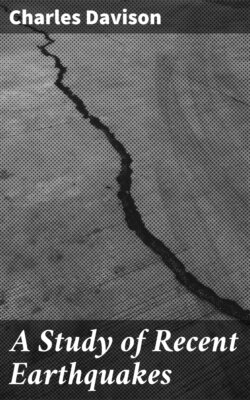Читать книгу A Study of Recent Earthquakes - Charles Davison - Страница 12
На сайте Литреса книга снята с продажи.
ISOSEISMAL LINES AND DISTURBED AREA.
ОглавлениеThe position of the meizoseismal area, to which Mallet devoted most of his time, is indicated by the small oval area marked 1 in Fig. 2, represented on a larger scale in Fig. 9. It is 40 miles long and 23 miles wide,[7] and contains 950 square miles. Within this area, the loss of life was great and most of the towns were absolutely prostrated.
The next isoseismal, No. 2, which is also shown more clearly in Fig. 9, bounds the area in which the loss of life was still great and many persons were wounded, while large portions of the towns within it were thrown down. Its length is 65 miles, width 47 miles, and area 2,240 square miles. The third isoseismal includes a district in which buildings were only occasionally thrown down, though none escaped some slight damage, and in which practically no loss of life occurred. This curve is 103 miles long, 82 miles wide, and includes 6,615 square miles. Lastly, the fourth isoseismal marks the boundary of the disturbed area, which is 250 miles long, 210 miles wide, and contains not more than 39,200 square miles; an amount that must be regarded as strangely small, and hardly justifying Mallet's estimate of the Neapolitan earthquake as the third among European earthquakes in extent as well as in seventy.
